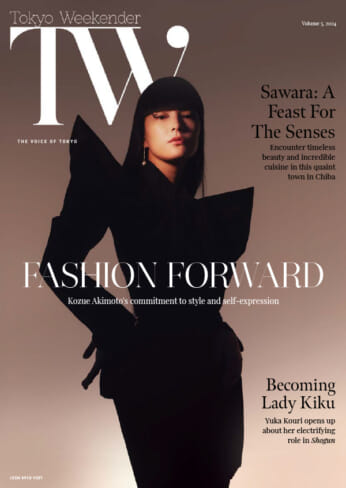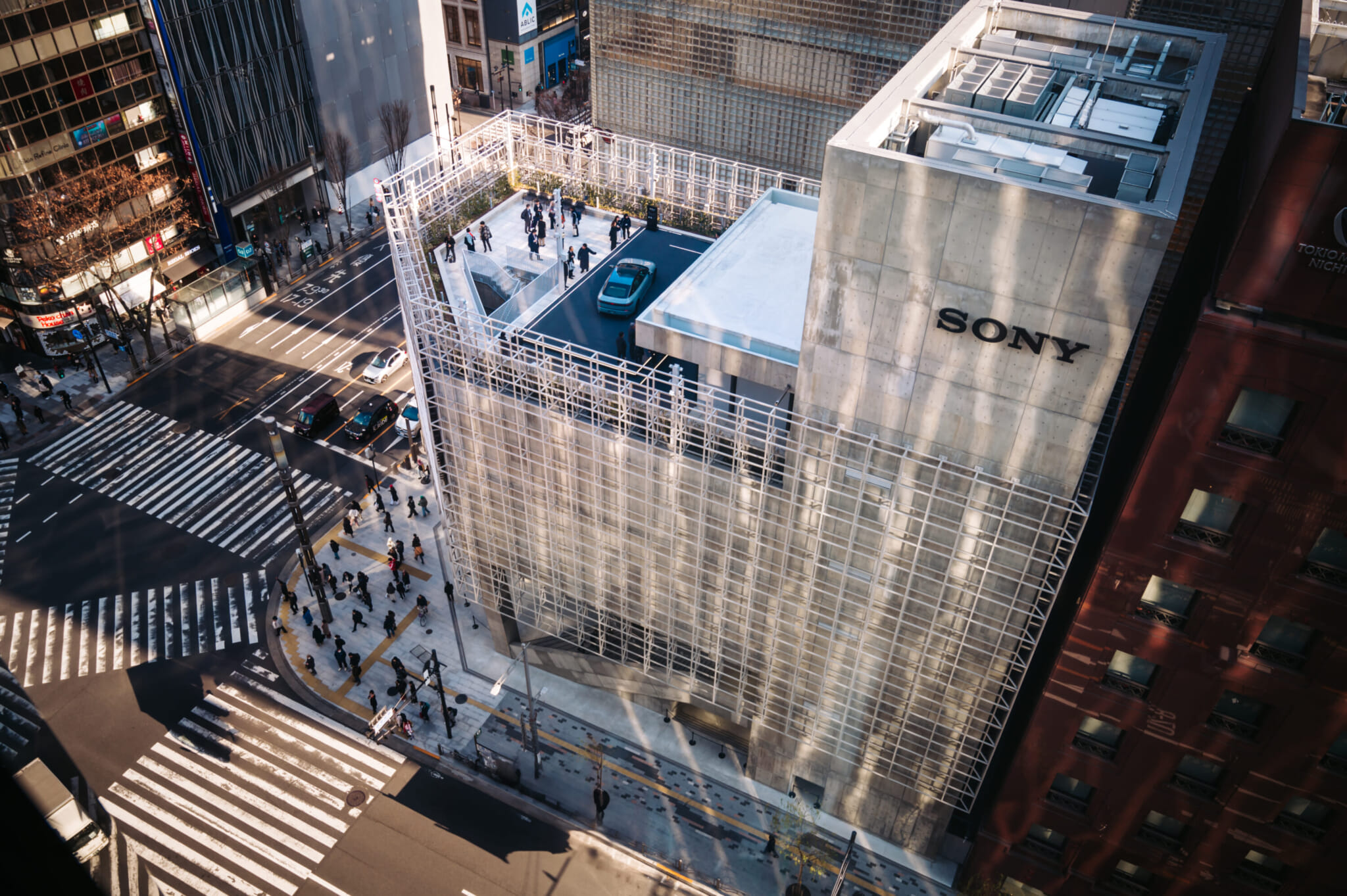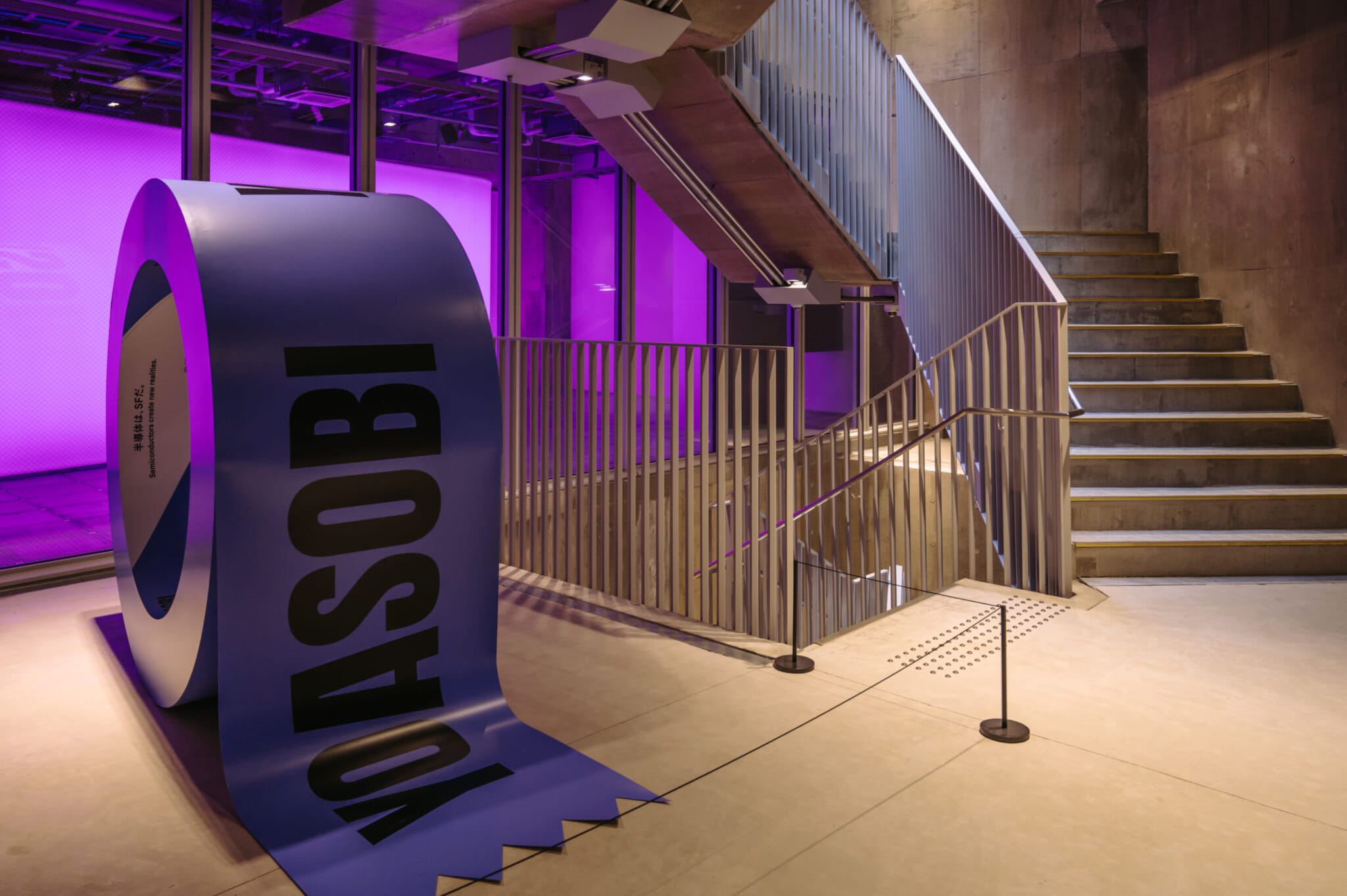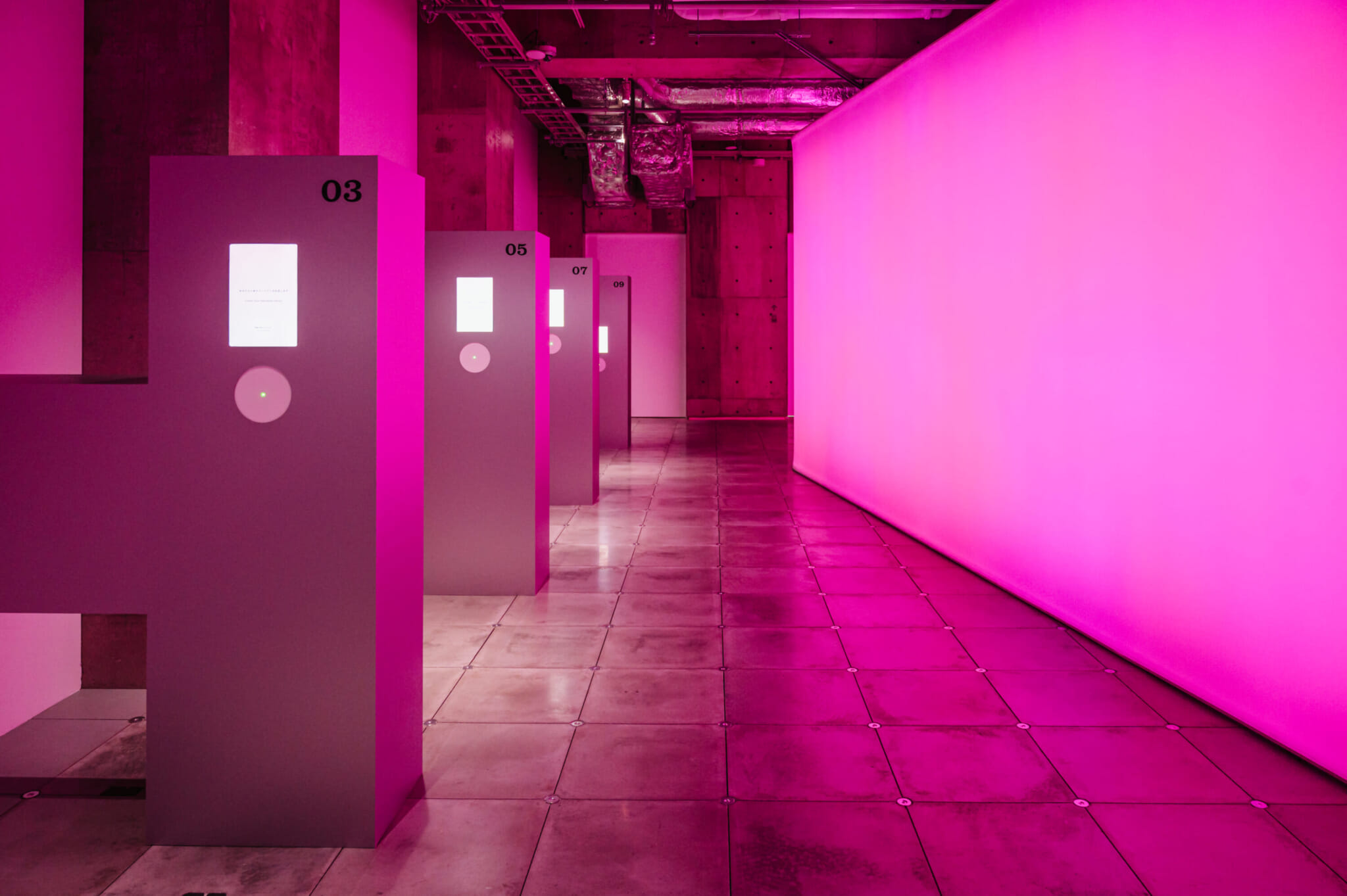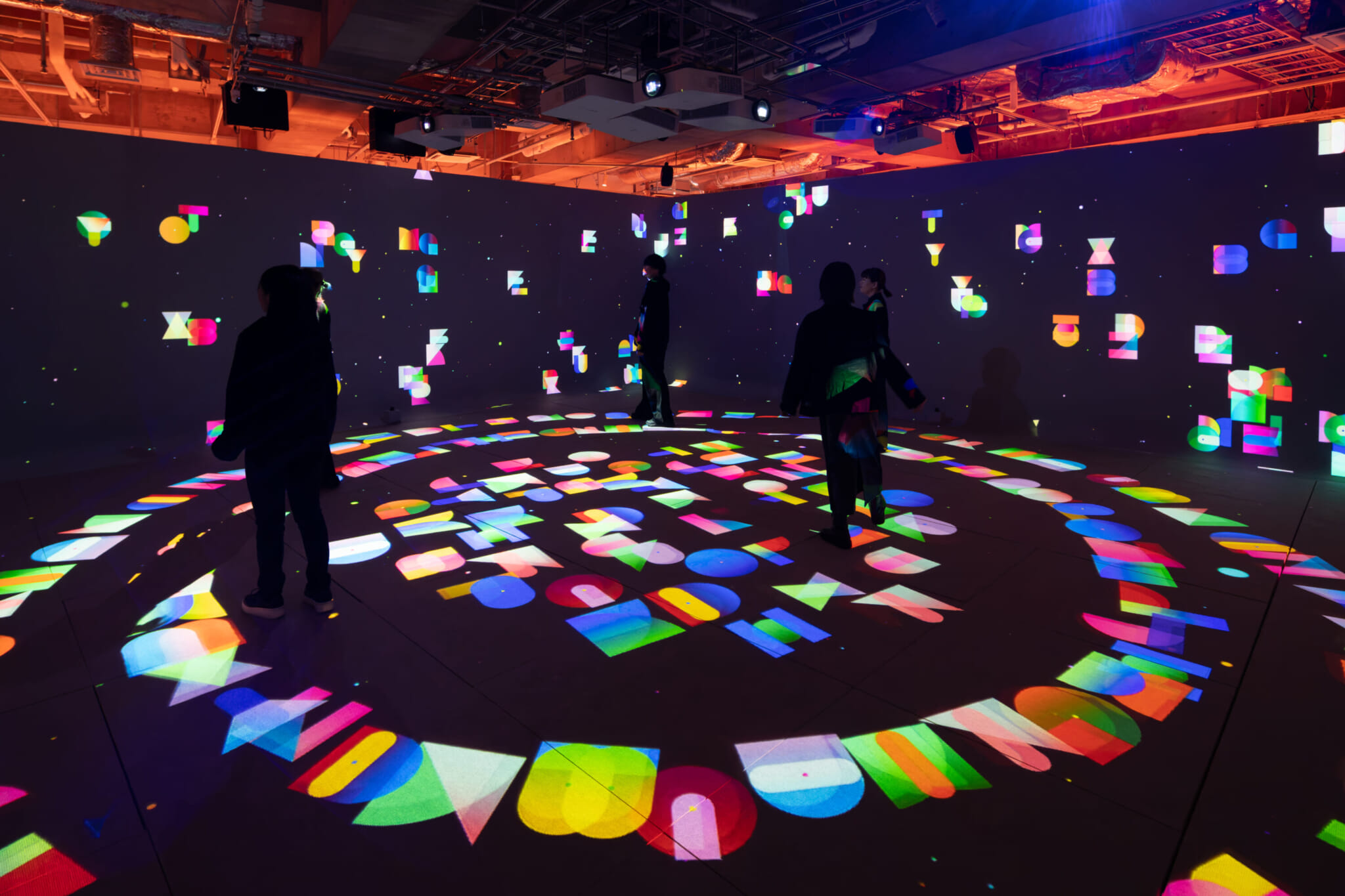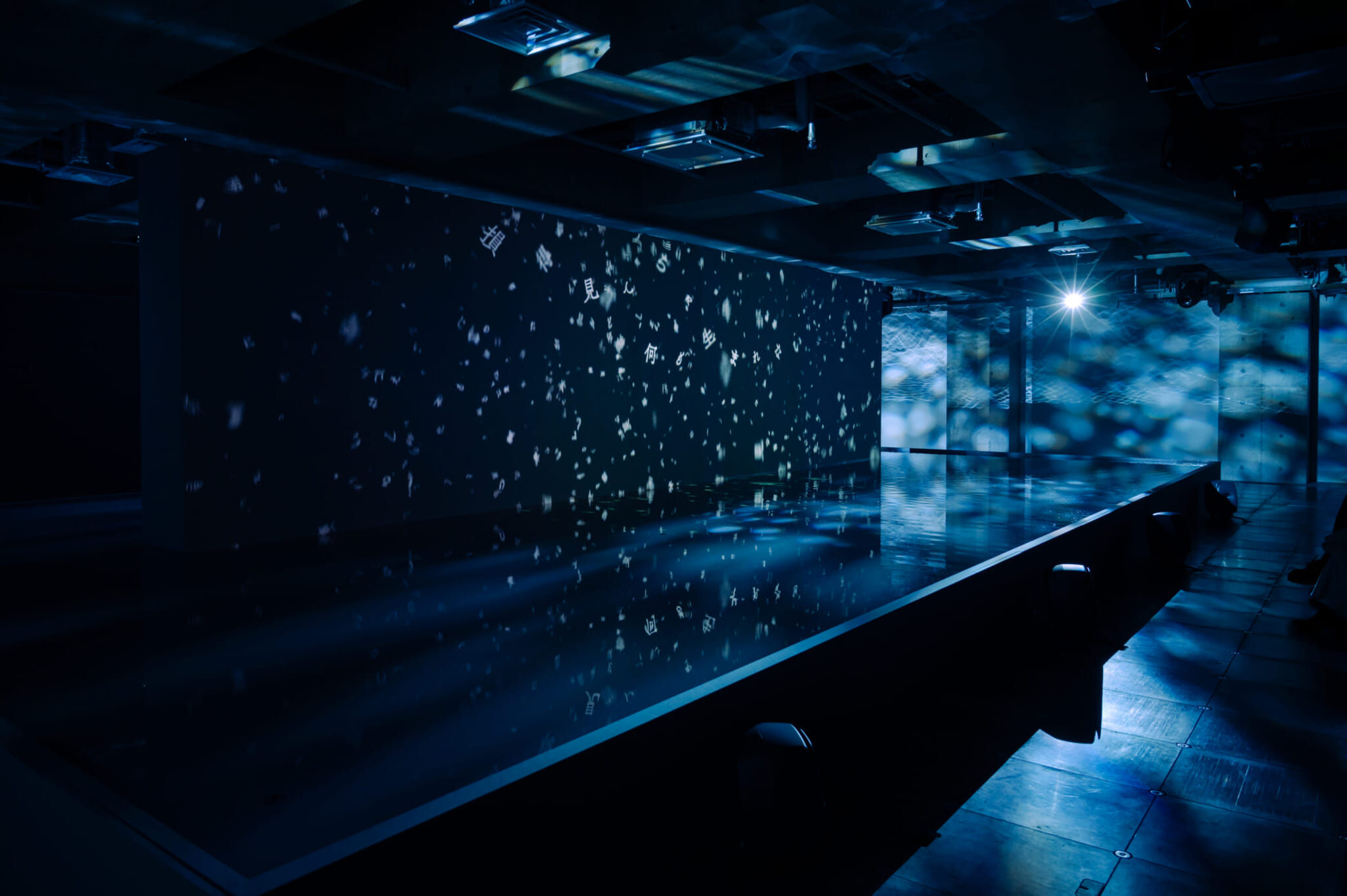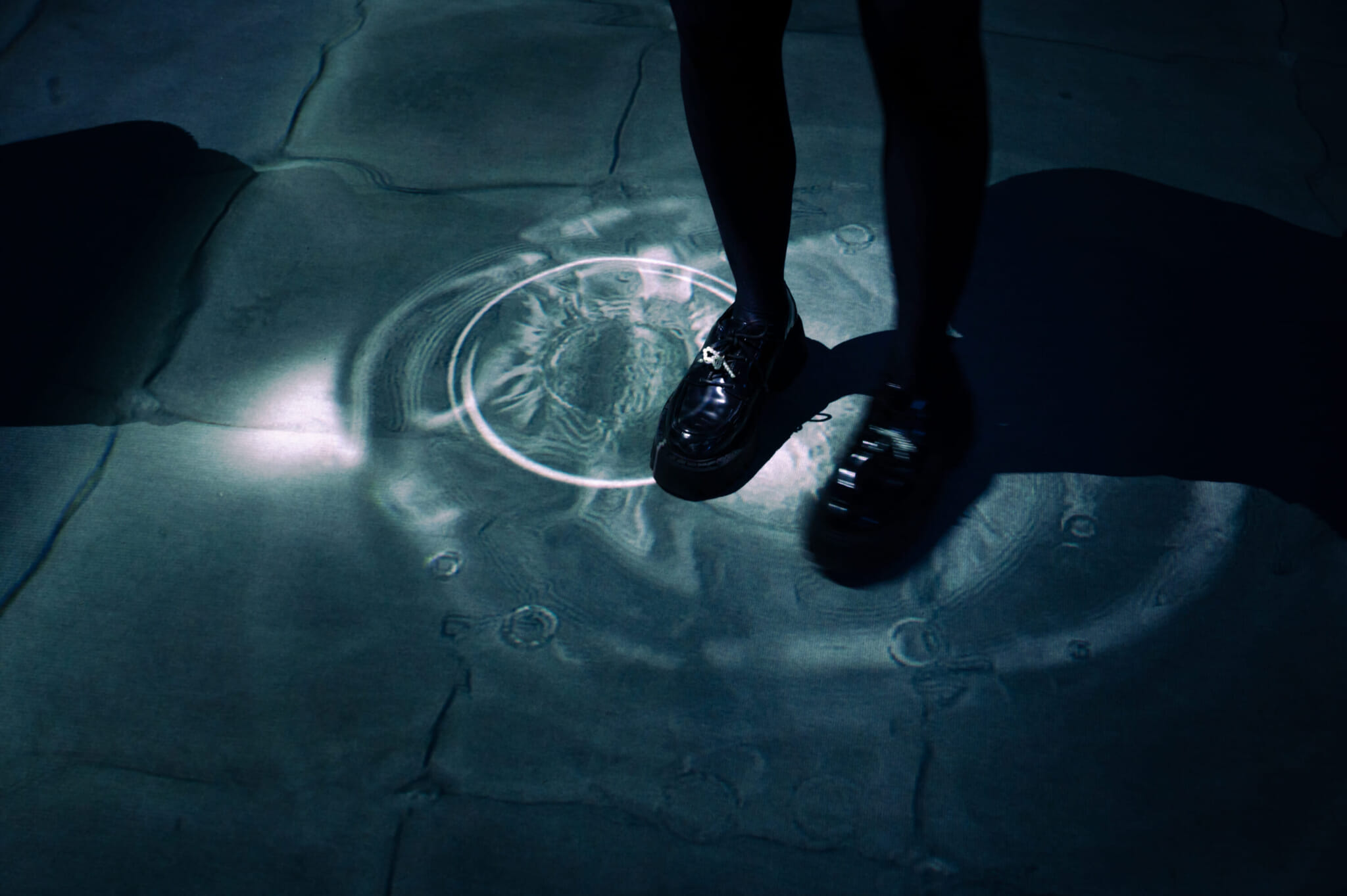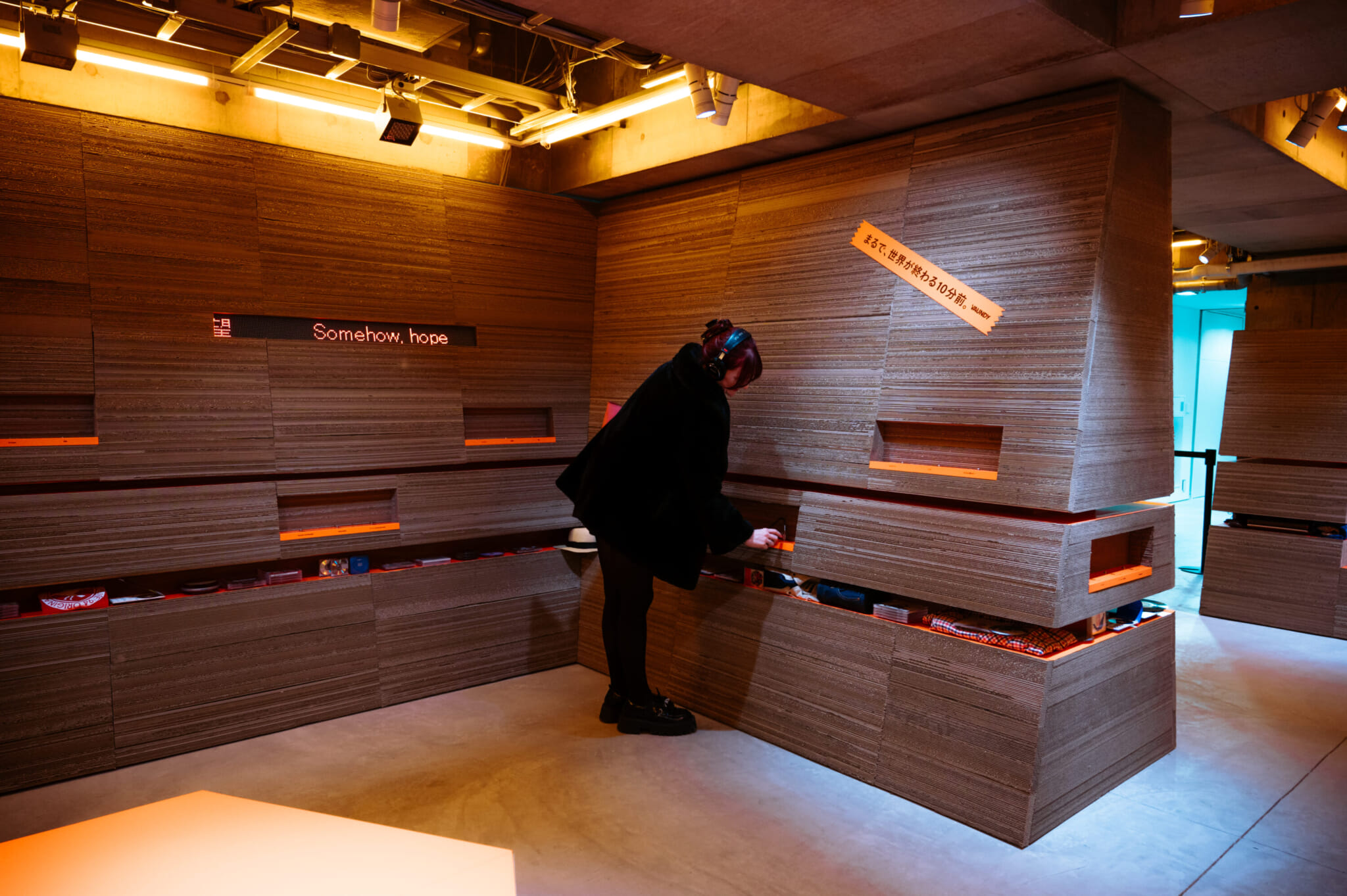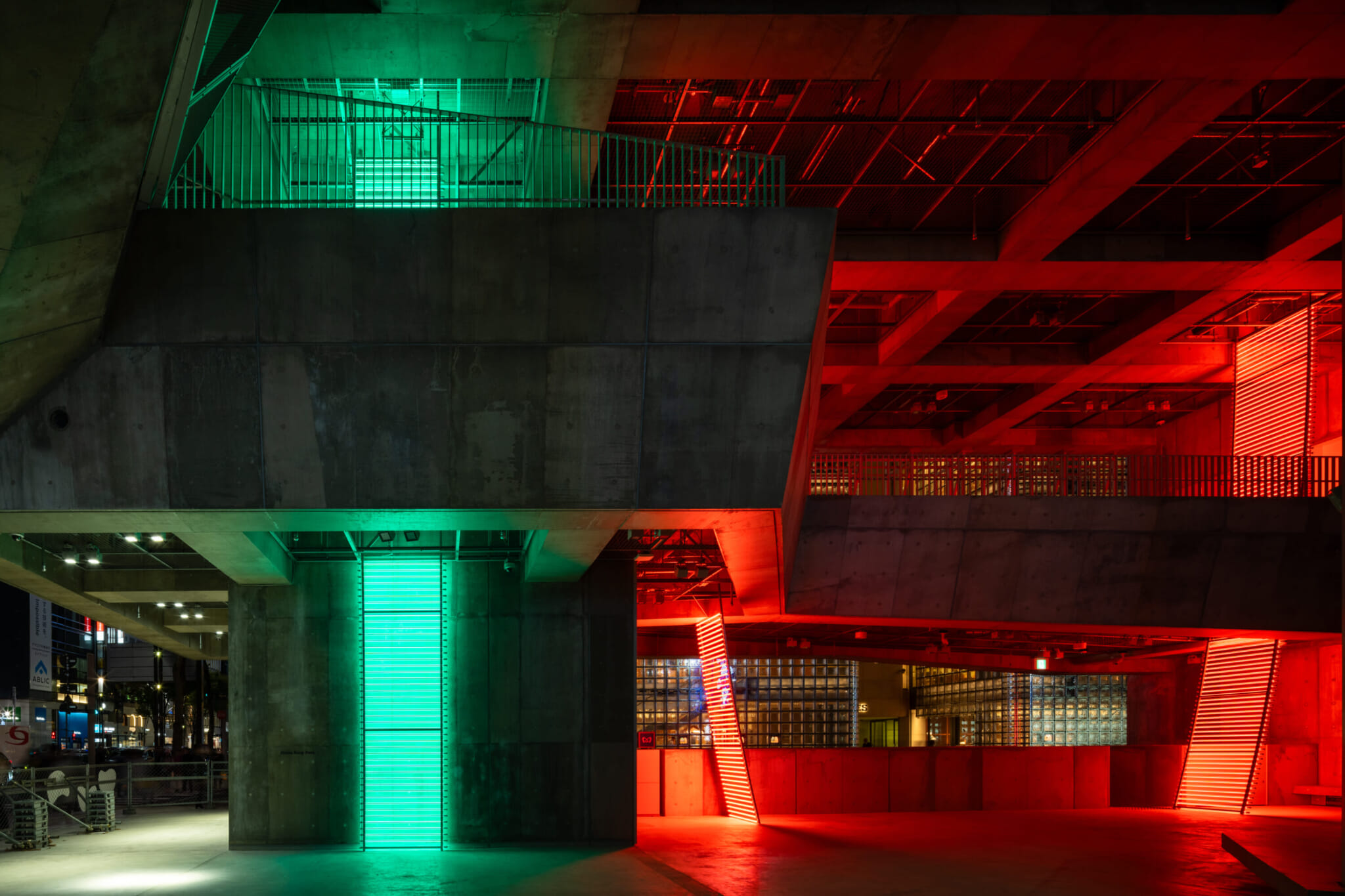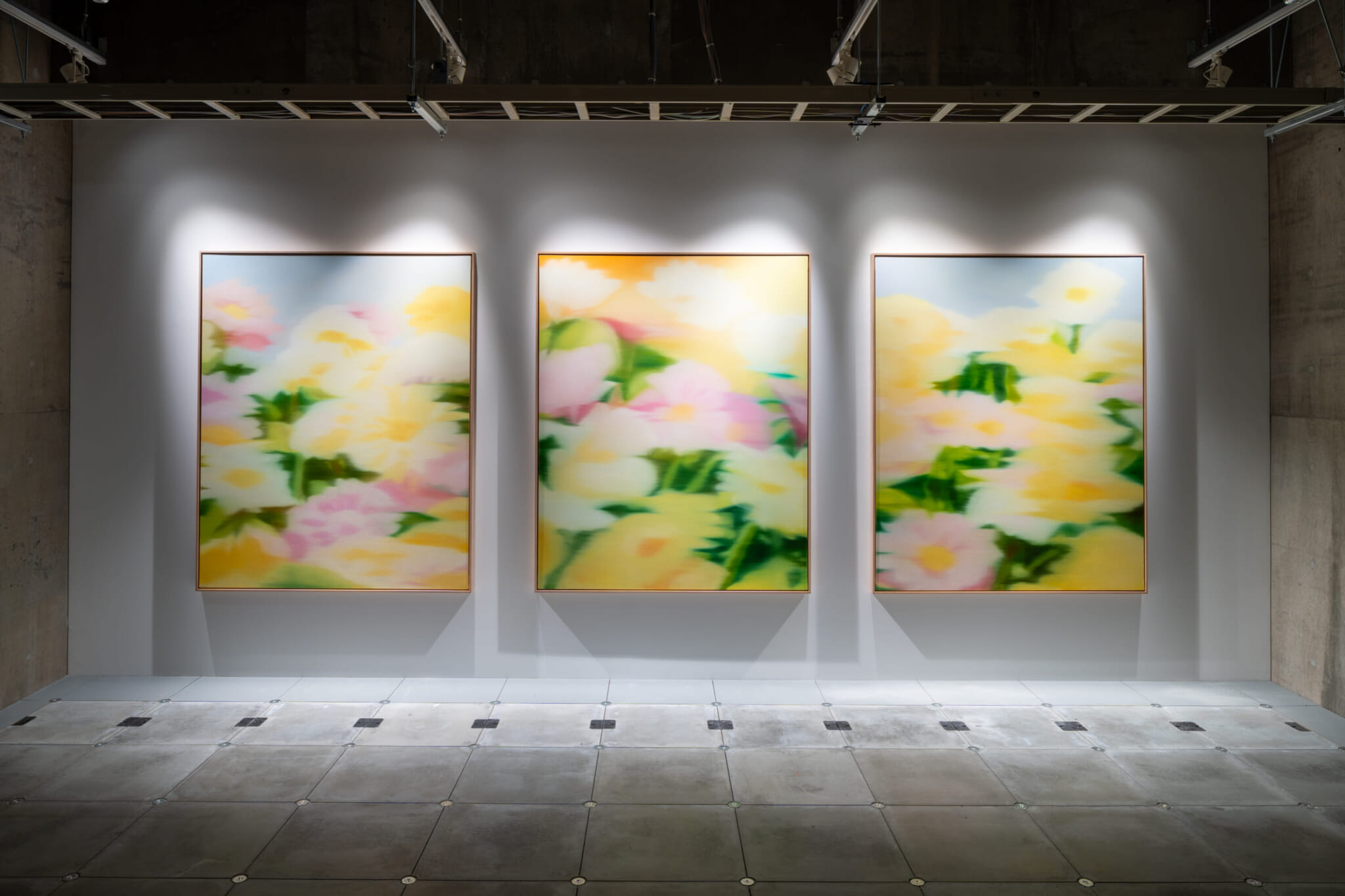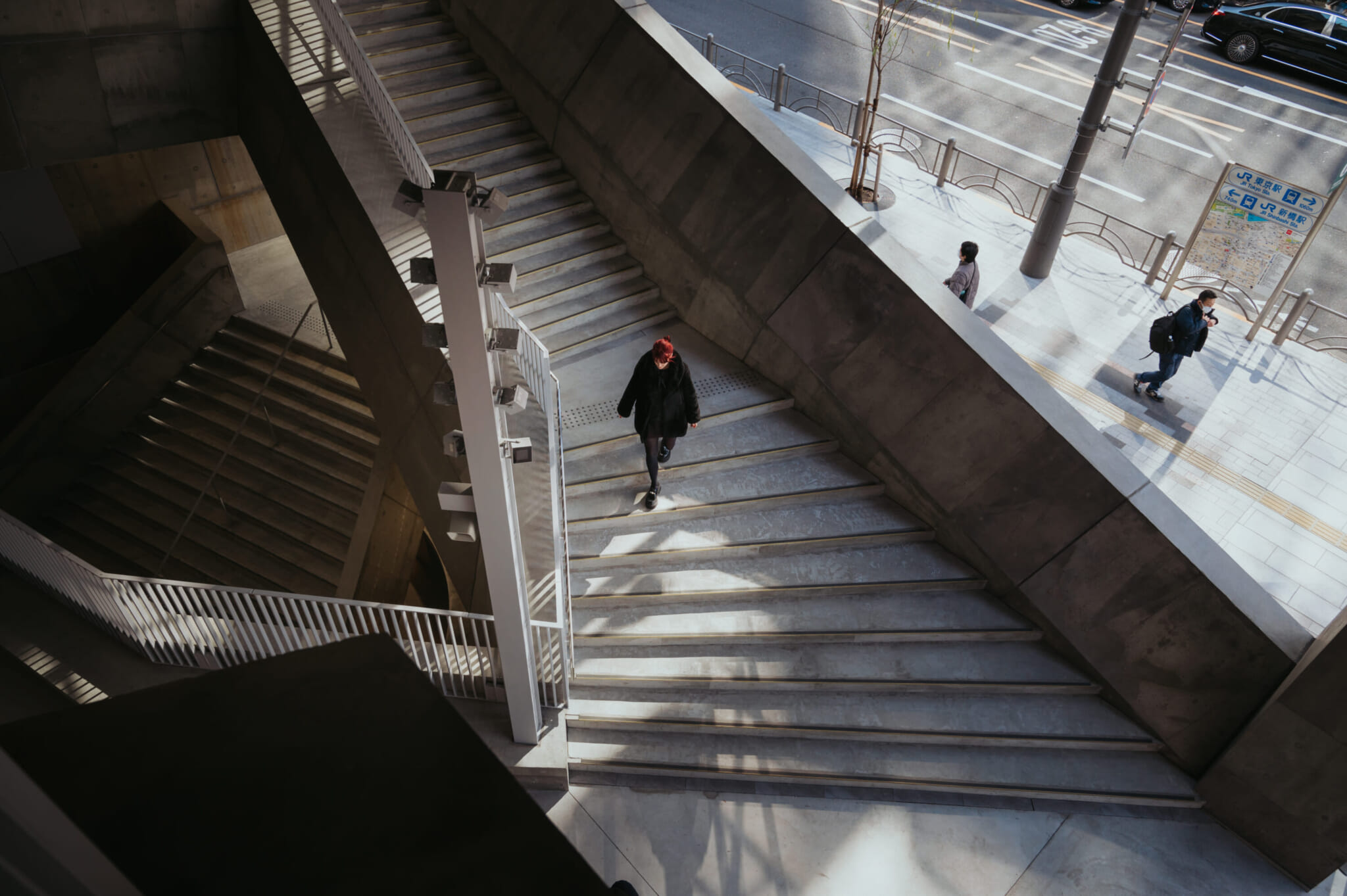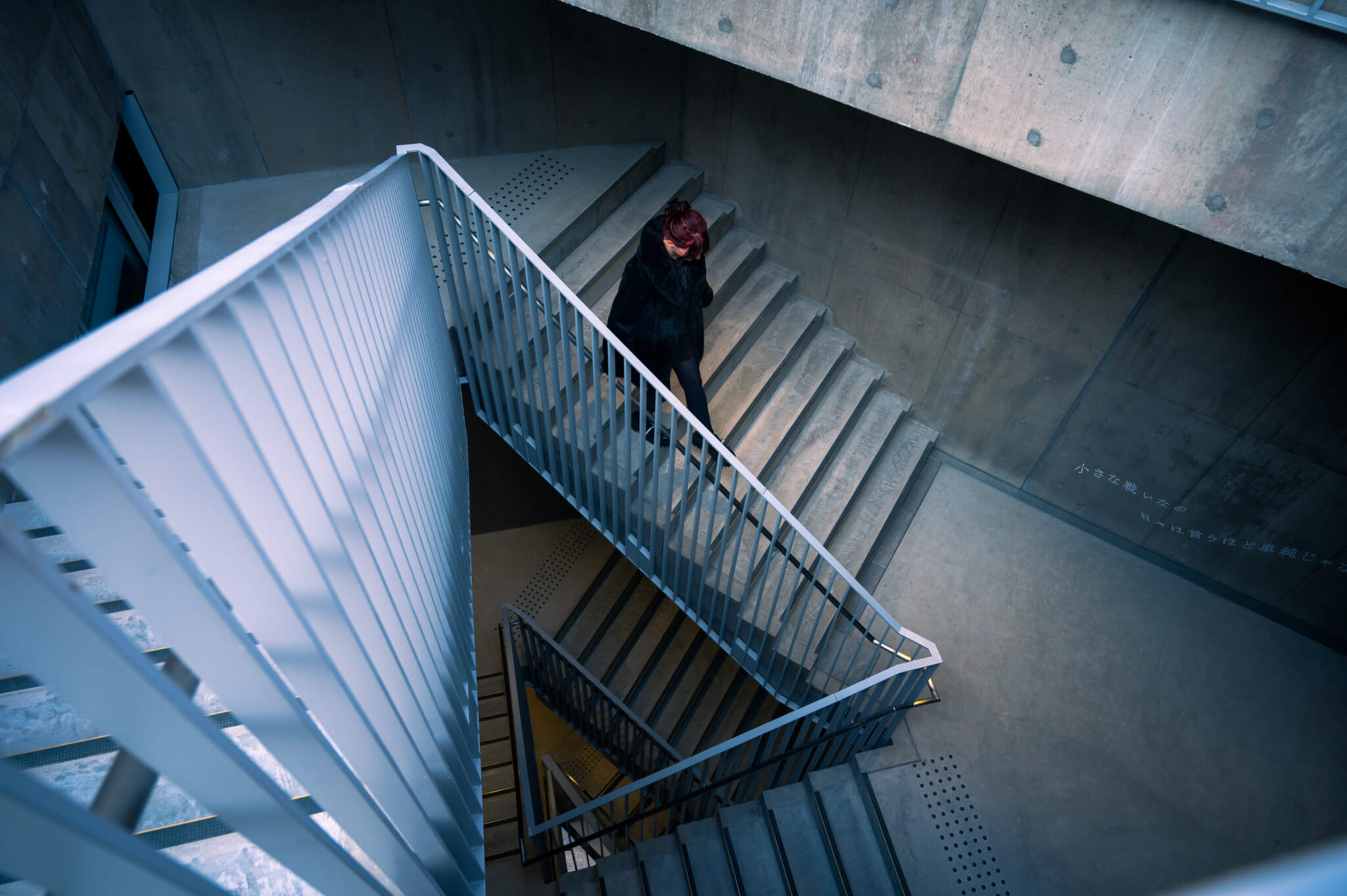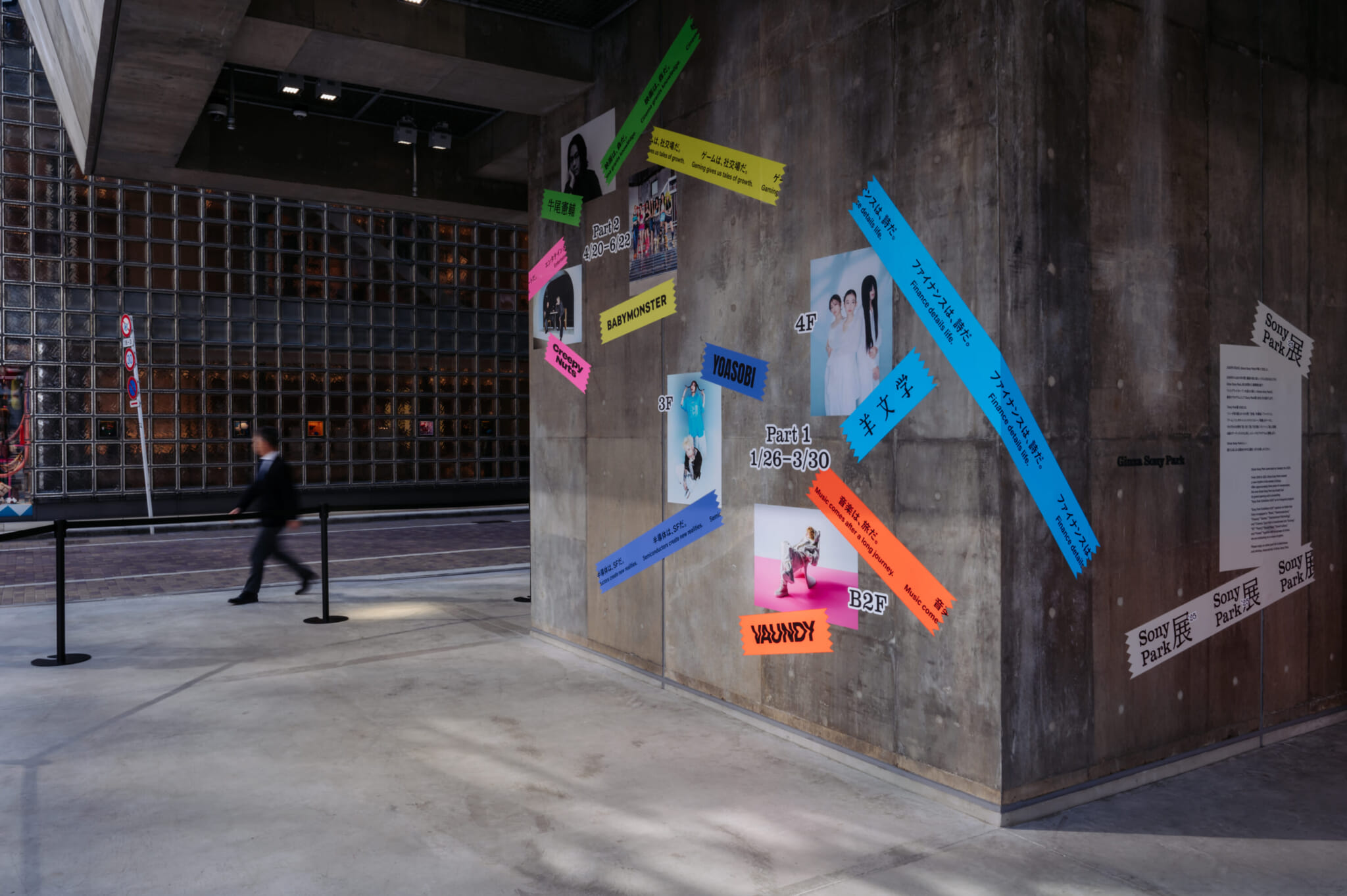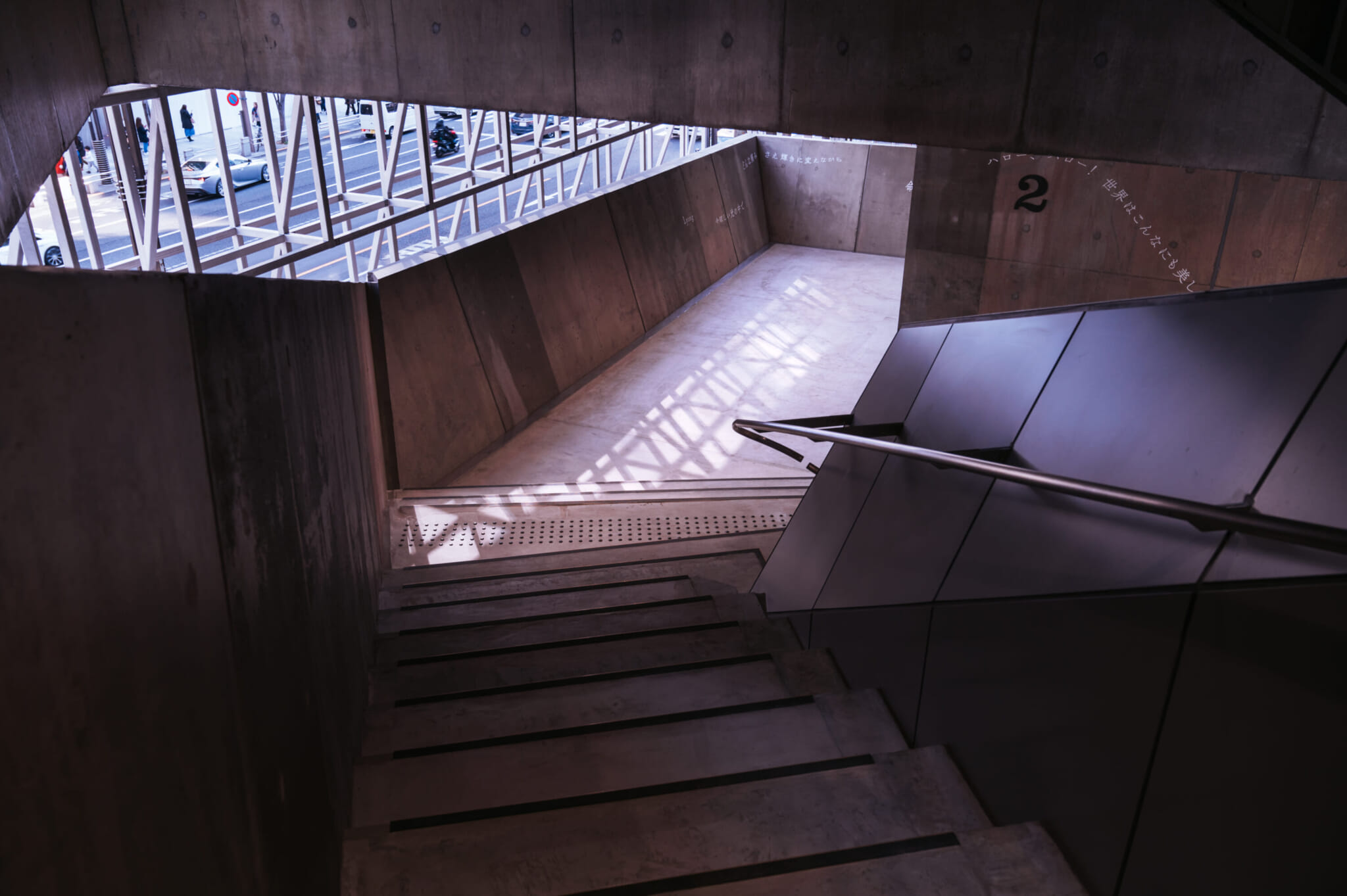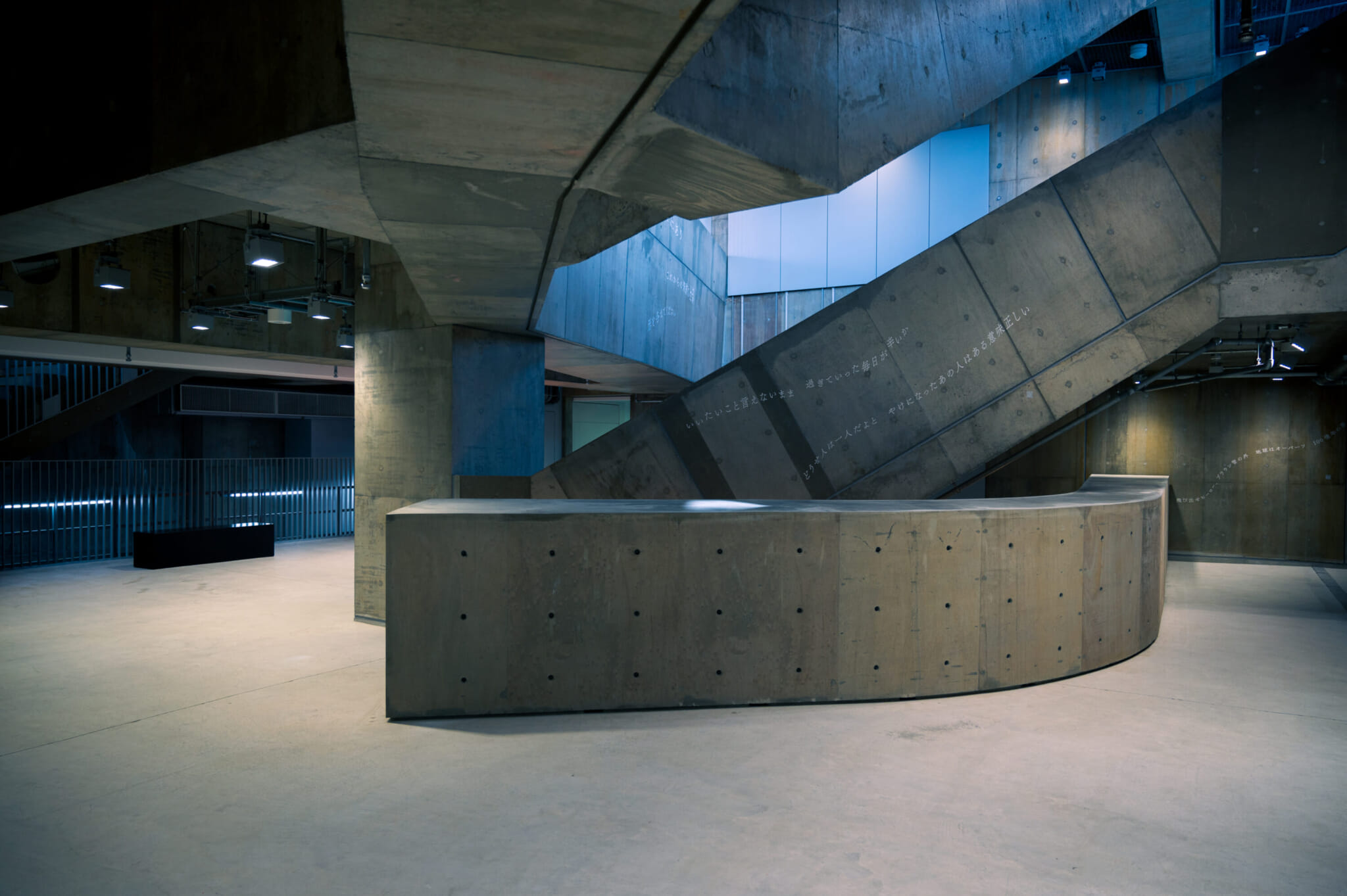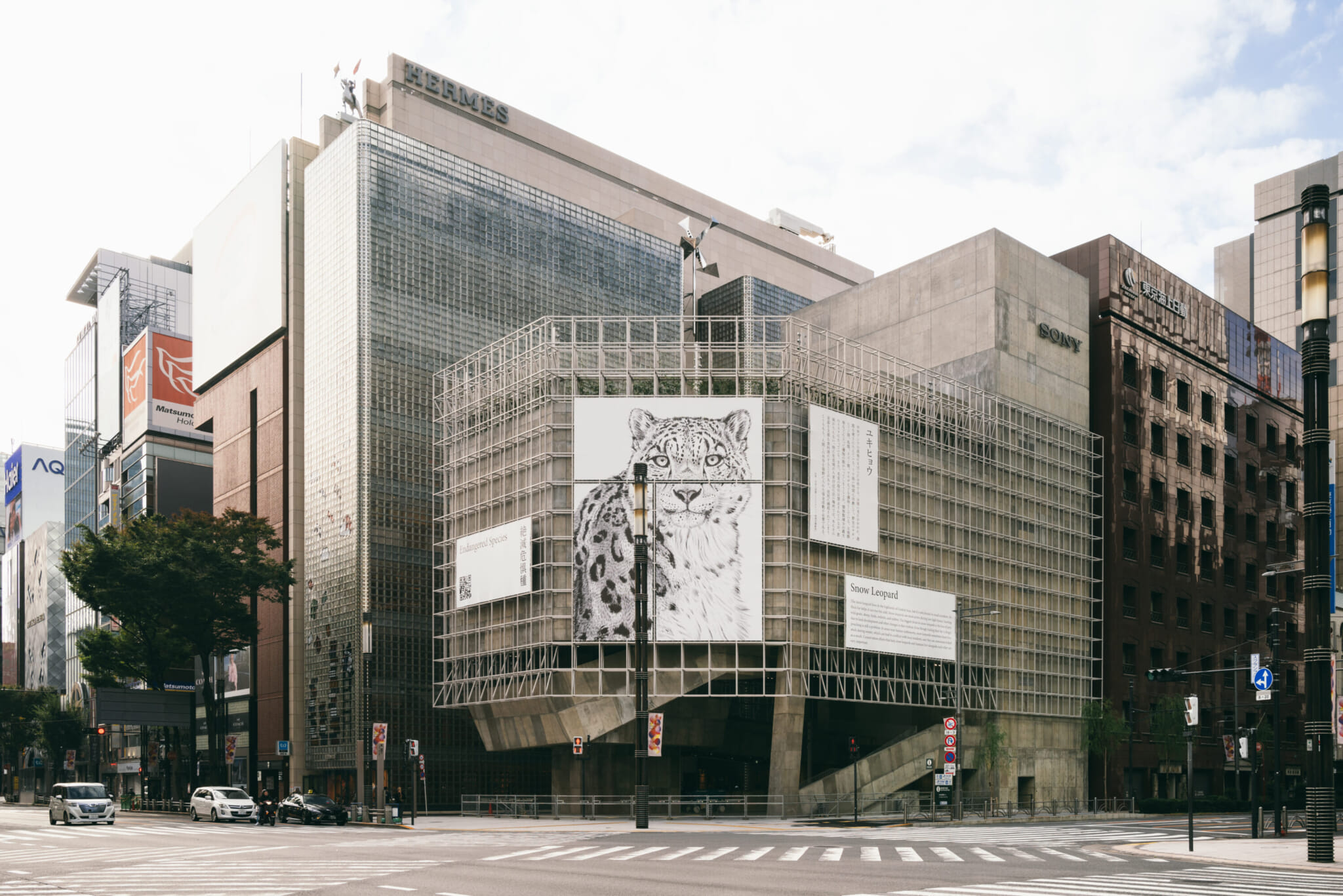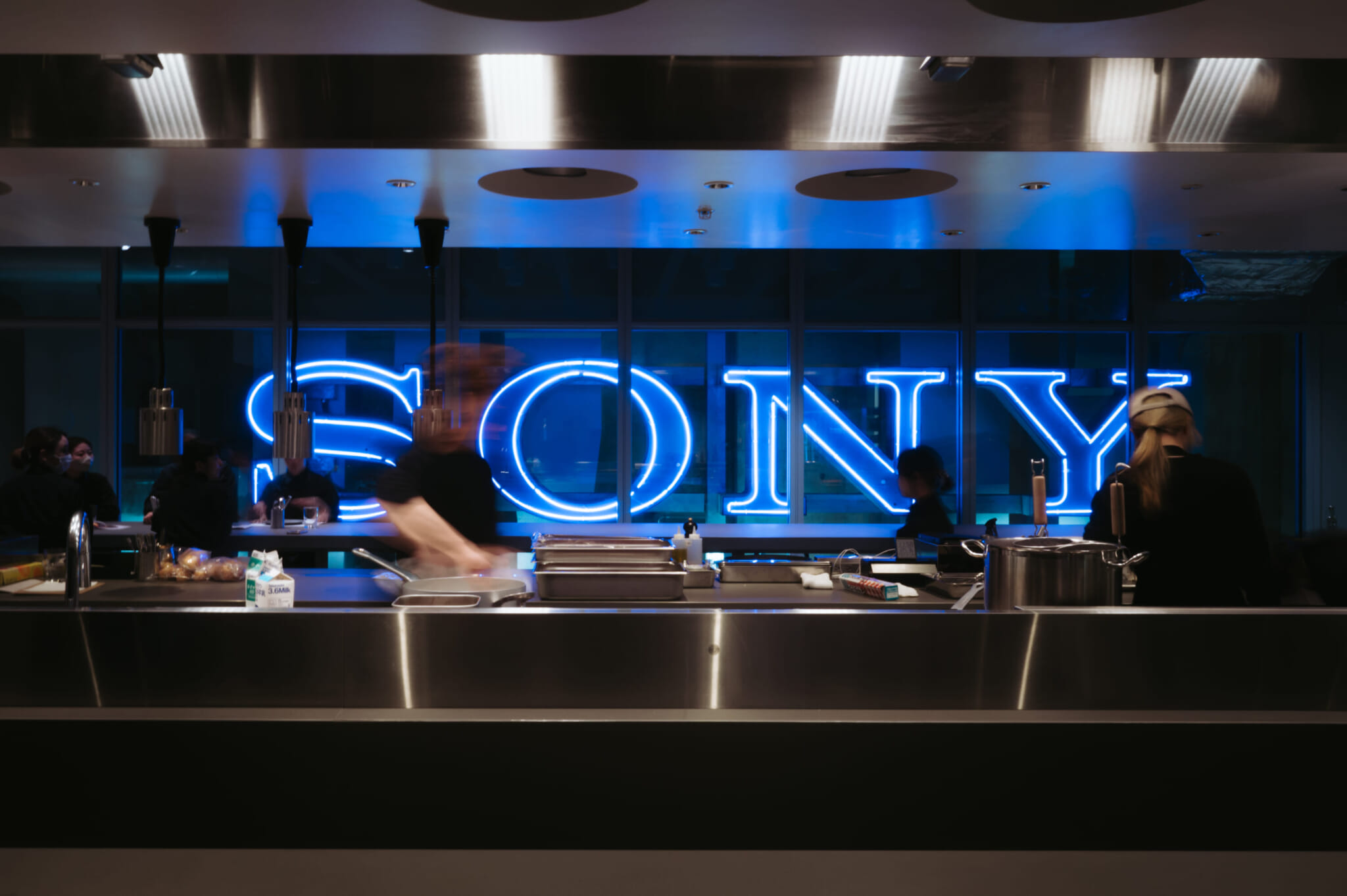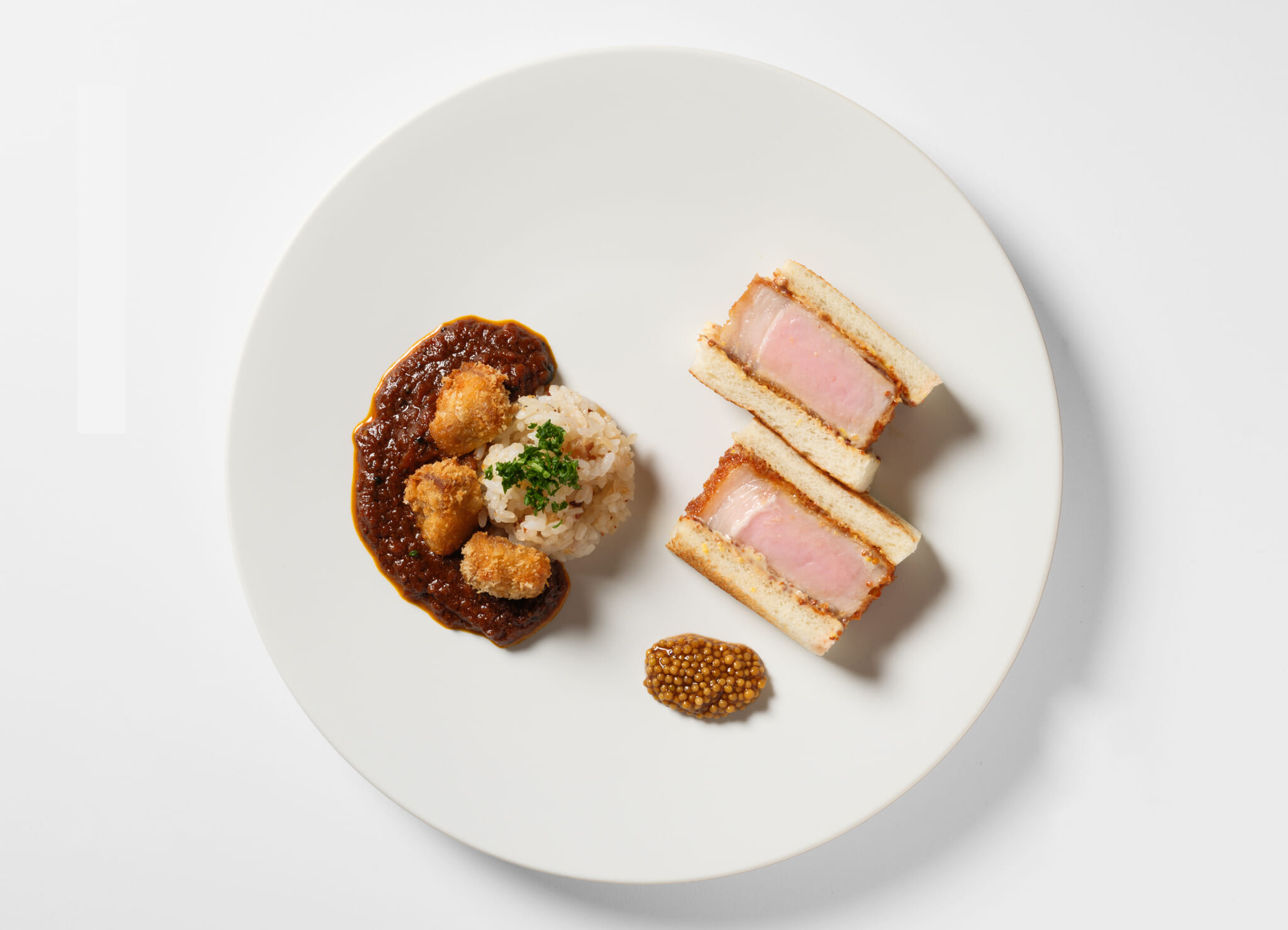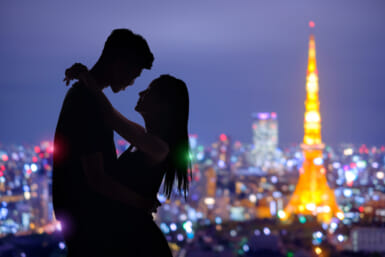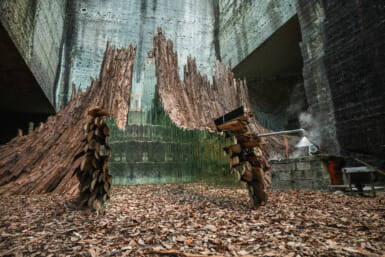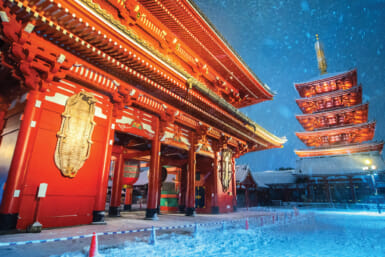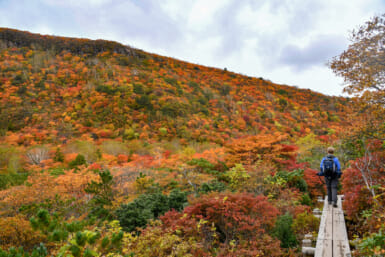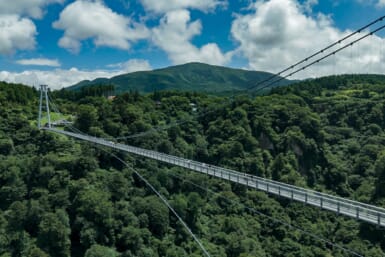Located in the heart of Tokyo’s bustling Ginza neighborhood, Ginza Sony Park stands out as a fresh and unexpected addition to the city’s cultural landscape. A sleek, minimalistic structure built from concrete and swathed in a grid-like steel frame, it reimagines the concept of a public park. Not merely a place to gather and sightsee, it also functions as a museum, an event space, a food hall, a performance venue and a showroom for technology — while always maintaining the ethos of a park: a place that’s fully open to the surrounding metropolis.
Instead of housing traditional storefronts and retail spaces in its eight floors, Ginza Sony Park will change in tune with the rhythms of the city, hosting a series of rotating events, experiences and exhibitions. And although it feels refined and high-end due to its exclusive location and stylish design, it was designed to be as widely accessible as possible. The diverse activities it hosts will open to everyone in Tokyo, residents and visitors alike, establishing it as a vital community and cultural hub.
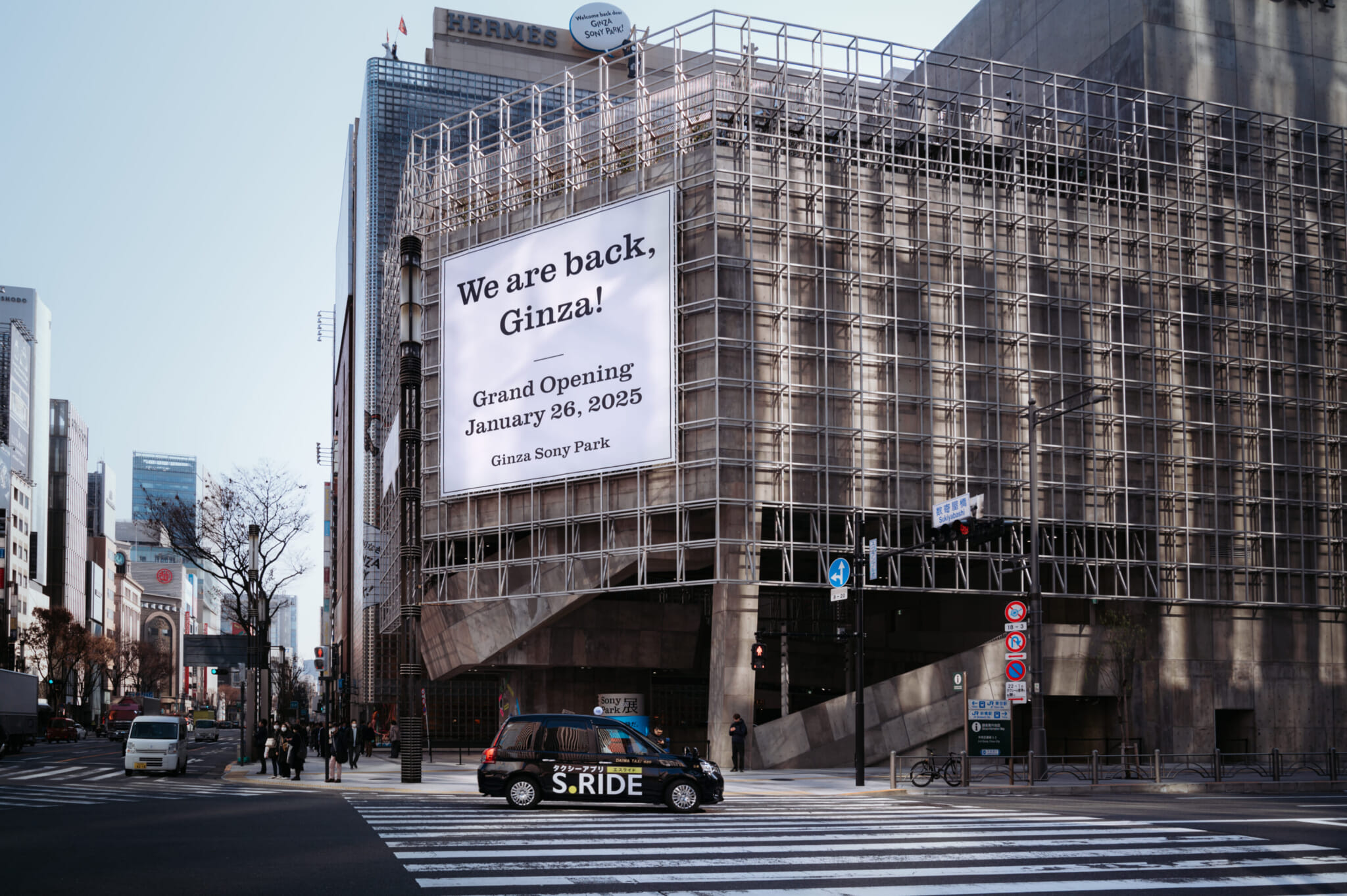
Continuing the legacy of the former Sony Building, which once stood in its place, Ginza Sony Park is a space that aims to showcase the spirit of Tokyo in a way that’s both intriguing and convenient — to open up the heart of the city for everyone to enjoy. It offers an abundance of things for visitors, whether you’re interested in architecture and design, art, music, local cuisine or simply strolling around and taking in the sights of Tokyo.
Here’s what you can expect to do, see and experience at Ginza Sony Park.
What To Do at Ginza Sony Park: Events and Exhibitions
Protean and adaptable, Ginza Sony Park will serve as a cultural hub where anyone can wander in and encounter firsthand the richness of Tokyo’s creative culture — art, music, design, cuisine and technology all merge here. Alongside its grand opening, it’s holding “Sony Park Exhibition 2025,” which will feature collaborations between Sony and six celebrated artists who’ve made a huge impact on Japan: Vaundy, Yoasobi, Hitsujibungaku, Babymonster, Creepy Nuts and Kensuke Ushio. Each of these programs is free and open to the public (though an advance reservation is required).
The exhibition draws from the six business segments in which Sony operates — video games, music, movies, entertainment technologies, semiconductors and finance — and will be held in two parts. Part one, from January 26 to March 30, includes the following programs: “Music comes after a long journey,” in collaboration with Vaundy; “Semiconductors create new realities,” with Yoasobi; and “Finance details life,” with Hitsujibungaku.
Part two, from April 20 to June 22, includes: “Gaming gives us tales of growth,” with Babymonster; “Entertainment technologies break the mold,” with Creepy Nuts; and “Cinema grants knowledge,” with Kensuke Ushio.
Even before it opened, Ginza Sony Park served as a cultural center; after construction was completed in August of 2024, selected floors of the space were opened to the public for special events and exhibitions. In late 2024, it hosted “Art in the Park (Underconstruction)” and “sakamotocommon Ginza.”
“Art in the Park (Underconstruction)” brought together cutting-edge artists Shun Sudo, Koji Yamaguchi and Takuro Tamayama, who turned the park’s raw, in-progress spaces into an playground for creativity — something that could only be experienced at Ginza Sony Park, and just for two weeks. This unique event transformed the construction site into a temporary art museum, attracting over 10,000 curious visitors.
sakamotocommon Ginza, held for nine days in December, was an astonishing event that aimed to share the legacy of Ryuichi Sakamoto with the world. Ascending from the second basement level, where a large screen visualized electromagnetic waves, guests eventually made their way to the fourth floor, where a piano owned by Sakamoto was on display. Speakers set around the room played some of some of the musician’s most beloved songs. The room had the hushed and awestruck air of a church, with soft light filtering in through the skylight as spectators looked on in reverent silence.
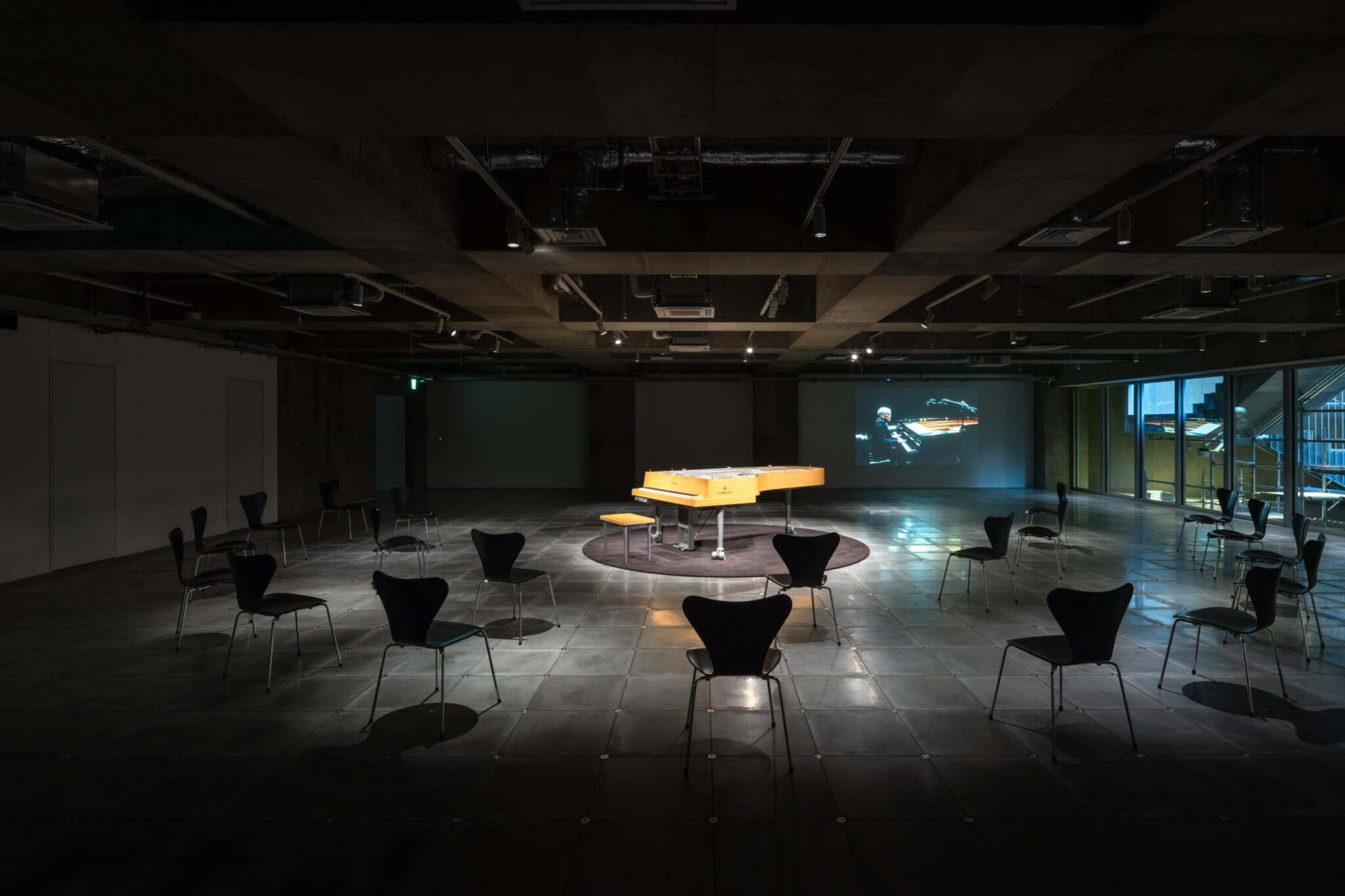
Innovative Architecture and Design
Even without its impressive cultural events and activities, Ginza Sony Park is a landmark worth visiting in its own right. Its minimalistic, coiled structure recalls the Guggenheim Museum in New York (which actually served as a design inspiration for the original Sony Building). Walking along the vertical promenade structure, watching the interplay of light and shadow as you make your way up to the top floor is a calming and nearly meditative experience.
It’s an unusual sight in the glitzy neighborhood of Ginza: In contrast to the icy, sparkling skyscrapers around it, Ginza Sony Park feels muted and warm. It’s also notably lower than the surrounding structures — something that was done on purpose, to foster a sense of openness in the crowded skyline. The stainless steel frame enclosing the building gives it the sense of being permeable to the outside world, and can also be used for special events and exhibitions. Last year, for instance, it displayed a series of billboards raising awareness about endangered species.
Ginza Sony Park was conceived of as a platform for culture, and its design reflects that fact. Everything about it is smooth, adaptive and invites exploration. On the street level, its atrium lacks doors and walls, summoning visitors in; on the second basement level, it’s seamlessly connected to the subway concourse. It’s integrated into the surrounding city, and it represents an interesting evolution in urban planning — challenging the traditional notion of a park, and showing us that public spaces can incorporate art and modern technology without compromising accessibility.
Nibun no Ichi: A Unique Taste of Ginza
Ginza Sony Park’s third basement floor is home to Nibun no Ichi, a casual eatery that showcases the culinary spirit of the city. It specializes in yoshoku, a distinctive genre of Japanese cuisine that evolved from Western specialties, reinterpreted to suit Japanese tastes — iconic dishes like omurice and Napolitan spaghetti are good examples. Yoshoku is charming, quirky, comforting and delicious, and it’s rare to find outside of Japan.
Ginza is known for its many yoshoku restaurants, and Nibun no Ichi aims to establish this cuisine as the area’s signature culinary experience. It also specializes in half-portions — two different dishes, each of which is one-fourth of a full serving — encouraging culinary exploration. The space is reminiscent of a dining area in a museum, so guests can easily grab something quick while they’re on the go. Or, if you’re feeling up for it, you can order several different dishes and try a little of everything.
Between its many cultural events, its cutting-edge design and its unique local culinary options, Ginza Sony Park distills the charm of the Ginza neighborhood — and Tokyo as a whole — compressing it into a single location. It’s a place meant to foster creativity and connection, where the ingenuity of the city can be absorbed and enjoyed to its fullest.
More Info
Ginza Sony Park had its grand opening on January 26, 2025. Learn more about the park at its website, Instagram and Twitter.
Admission to “Sony Park Exhibition 2025” is free, but reservations are required in advance and can be made through the official website.
